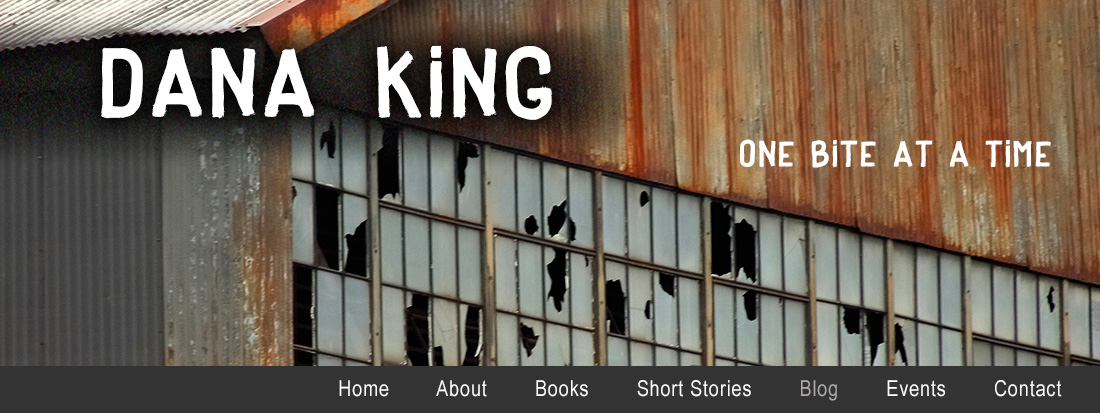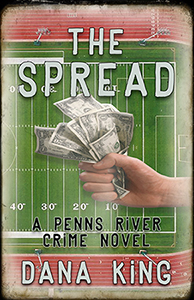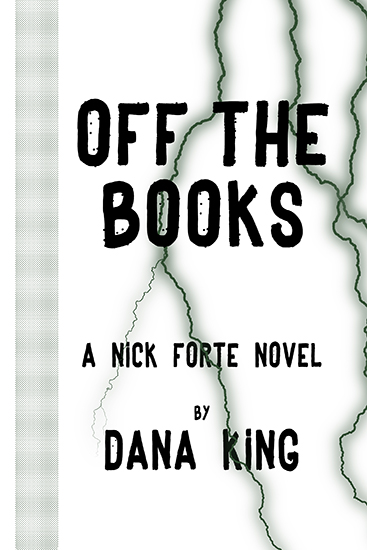Terrence McCauley’s name had been on the fringes of my radar for quite a while before learned he and I would both be members of Peter Rozovsky’s “Hard-boiled, Noir and the Reader's Love Affair With Both” at Bouchercon. I downloaded a copy of Terrence’s novel, Slow Burn, so I’d have some frame of reference during our discussion and was knocked out by it. Set during the Prohibition time of the Depression, it reads like a black-and-white movie made in the day when studios trusted the story and characters to stand on their own, without car chases and shoot-outs on the quarter hour. In preparation for Bouchercon, Terrence was kind enough to answer some questions about Slow Burn and himself as a writer.
One Bite at a Time: I read Slow Burn this week, staying up late last night to finish it. You not only captured the feel of the Depression, but also the style and tone of the old pulp writers. What made you choose a story set in that time? Was it something about the time and setting, or a desire to write in that style?
Terrence McCauley: I’m glad you enjoyed it. Slow Burn takes place in the same universe as my first two novels, Prohibition and Fight Card: Against the Ropes. I chose that era because I wanted to tell a simplified crime story in a complicated era. Setting such a story in modern day didn’t appeal to me, but New York’s rich history always has. My grandmother was born in 1902 New York and grew up in the same neighborhood as James Cagney. She was always very clear that she knew him from the neighborhood, but that they weren’t friends. As I was a little kid and she could’ve told me anything, her honesty always stuck with me. I also remembered her stories of raising a family through the Depression and Prohibition as differing from those I saw in movies and TV shows that depict that time. So, when I decided to become a writer, I did research into that era and realized it was far more dynamic than I’d ever thought it was. It’s not just about hats and gats and old cars and snappy dialogue. It was after the barbarism of World War One, and people had a grounded sense of reality that really doesn’t come forth in most depictions of the era. People were often carefree not because they didn’t know any better, but because they had already seen too much. I try to reflect some of that jaded worldliness in my books, especially in Slow Burn where the contrast between those who have money and those who don’t is quit evident.
OBAAT: Charlie Doherty is a well-chosen and well-crafted character. A former bagman for Tammany Hall, pushed to the fringes when the Reformers took over, now looking to reform himself, but maybe not too much. It’s a common idea—former bad guy sees the light—yet you keep it fresh. How did you come to think of Charlie, and did you consciously tread just this side of Stereotype Swamp?
TM: I did consciously tread the stereotype. When writing in a genre like this, the protagonist needs to be somewhat accessible to the reader without pandering to them. So yes, he’s haunted, but he’s not your stereotypical corrupt cop who drinks too much in his room every night. He knows it’s getting out of hand and he keeps an eye on it. He also didn’t wake up one day and wonder how he became so crooked. He’d been crooked from Day One and knew it. He embraces what he is and doesn’t apologize for it. He’s just sorry the good times came to an end. I wrote Charlie this way because I’m so sick and tired of seeing characters like him suddenly seek redemption. In Slow Burn, he sticks with the case because he thinks there’s money in it for him. When he gets to know Mr. Van Dorn a bit better, his priorities change. I justify it by external actions, not from internal revelations or a willingness to reform. Charlie loved the old system and would’ve been happy to keep it going. He doesn’t see the error of his ways. He simply adjusts to the new landscape for the wrong reasons. I think most of us do that.
OBAAT: There’s a refreshing realism in Slow Burn. Reminiscent of the old pulps, but more nuanced. Lounge singer Alice is hot, but her age shows up close, and she can’t really sing. Carmichael and Doherty have history, and Carmichael has his moments, but deep down he’s an even bigger bastard than he appears. (He reminds me that way of the Rawls character in The Wire.) You’re able to convey all this without using much backstory, which keeps things moving. Did you have backstories written for these characters in advance, or is this how the played out in the writing?
TM: Most of it played out in my mind as I wrote Prohibition. I intentionally wrote Slow Burn as a standalone story, although people will who enjoy it will probably get a kick out of seeing Doherty back when he was on the force in those earlier books.
So, in that sense, I already had Doherty’s character fleshed out. He’s crooked, but everyone is crooked. He’s certainly brave, but knows his limitations. He swims in the same dirty water as everyone else because he doesn’t have much of a choice.
The rivalry with Carmichael came as I began writing Slow Burn. I hadn’t planned on it, but it really added something to the story and made it great to write. But if I can’t tell backstory as it’s moving, I tend to leave it out. No one wants to read big chunks of backstory anyway. I know I don’t. Instead, I show a little bit and let the reader fill in the rest. I think backstory can kill a story’s momentum and I’d rather have someone wishing they knew more than yawning through a part of my work.
OBAAT: Who plays Doherty and Carmichael in the movie? (Living actors at a different age and dead actors qualify for mention.) I kept thinking of Ralph Meeker as Doherty. (I also kept seeing events as a black-and-white movie.) Who would you cast in those parts, and as Loomis, Hauser, and Alice? (You have a potential character actors’ heaven in this book.)
TM: Great question. I wrote Doherty as a smaller man than most people back then. In my mind, Paul Stewart, one of the Mercury players who was in movies like Champion, The Bad and the Beautiful and as the butler at the end of Citizen Kane would play Doherty. I want a rumpled, weary guy with a spark to play him.
Today, I’d love Jeremy Renner to play Doherty. Lieb Schriver to play Carmichael. I’d like Walton Goggins to play Loomis, Max Martini to play Hauser and Charliez Theron to play Alice. (In Prohibition – my Quinn character was based on Robert Ryan. Today, I’d like to see Gerard Butler to play him.)
OBAAT: Do you outline, or make things up as you go?
TM: Outlines would make life easier for me, but I write as I go. That way, the entire story unfolds for me like it does with my character and my reader.
OBAAT: Who are your major influences as a writer?
TM: James Ellroy is phenomenal. He takes complex, flawed characters and a unique style to give the reader a hell of a ride. Robert B. Parker’s Jesse Stone and Everett Hitch/Virgil Cole books were big influences on how to tell a lot of backstory without the huge paragraphs that turn readers off. Elmore Leonard had a wonderful talent of saying a lot with few words. Donald Westlake’s/Richard Stark’s character Parker was equally as influential.
OBAAT: What’s next?
TM: Several things, actually. I’ve got a couple of short stories coming out: “A Bullet’s All It Takes” in Big Pulp’s “The Kennedy Curse” edition. You see my other protagonists Terry Quinn and Archie Doyle taking on Joe Kennedy in 1920s New York. I also have a new character set in the modern day – ‘spy-runner’ James Hicks – appearing in a short story called “Lady in the Tub” that will be published in Noir Nation 3.
I’m also working on a sequel to Prohibition called The Long Road Back. And yes, I’ve got a sequel in the works for Slow Burn as well, called The Fairfax Incident. The premise of Fairfax is simple: when is murder not murder? When it’s a suicide made to look like murder. It involves some colorful figures from New York society as well as a troubling German political movement that begins looking for a foothold in The Big Apple. The scary part is, much of the book is based on actual events. It’s a lot of fun to write.
Thanks, Terrence, for taking the time to provide such enlightening answers. I’m looking forward to discussing some of the above in more detail over a beverage or three.




No comments:
Post a Comment